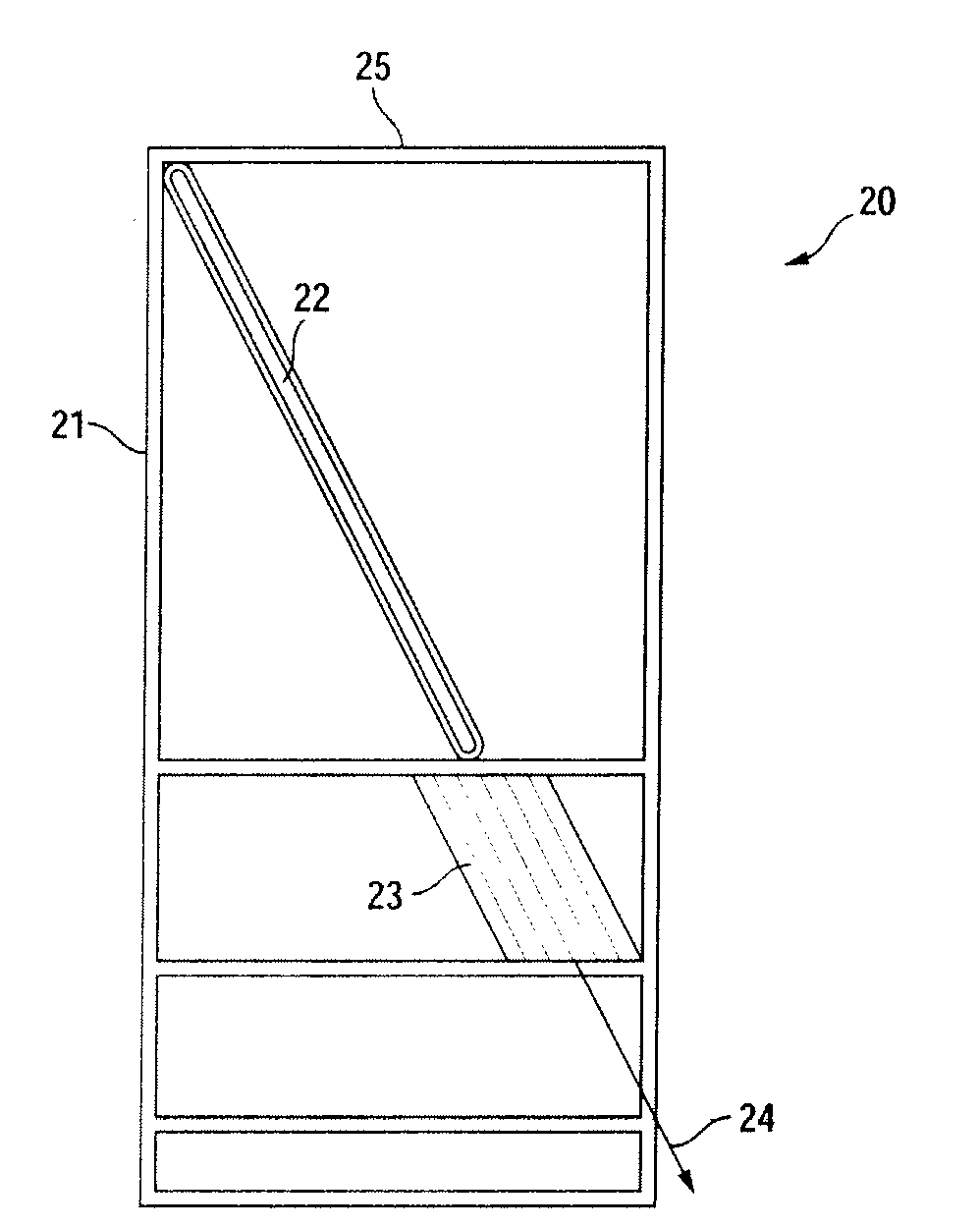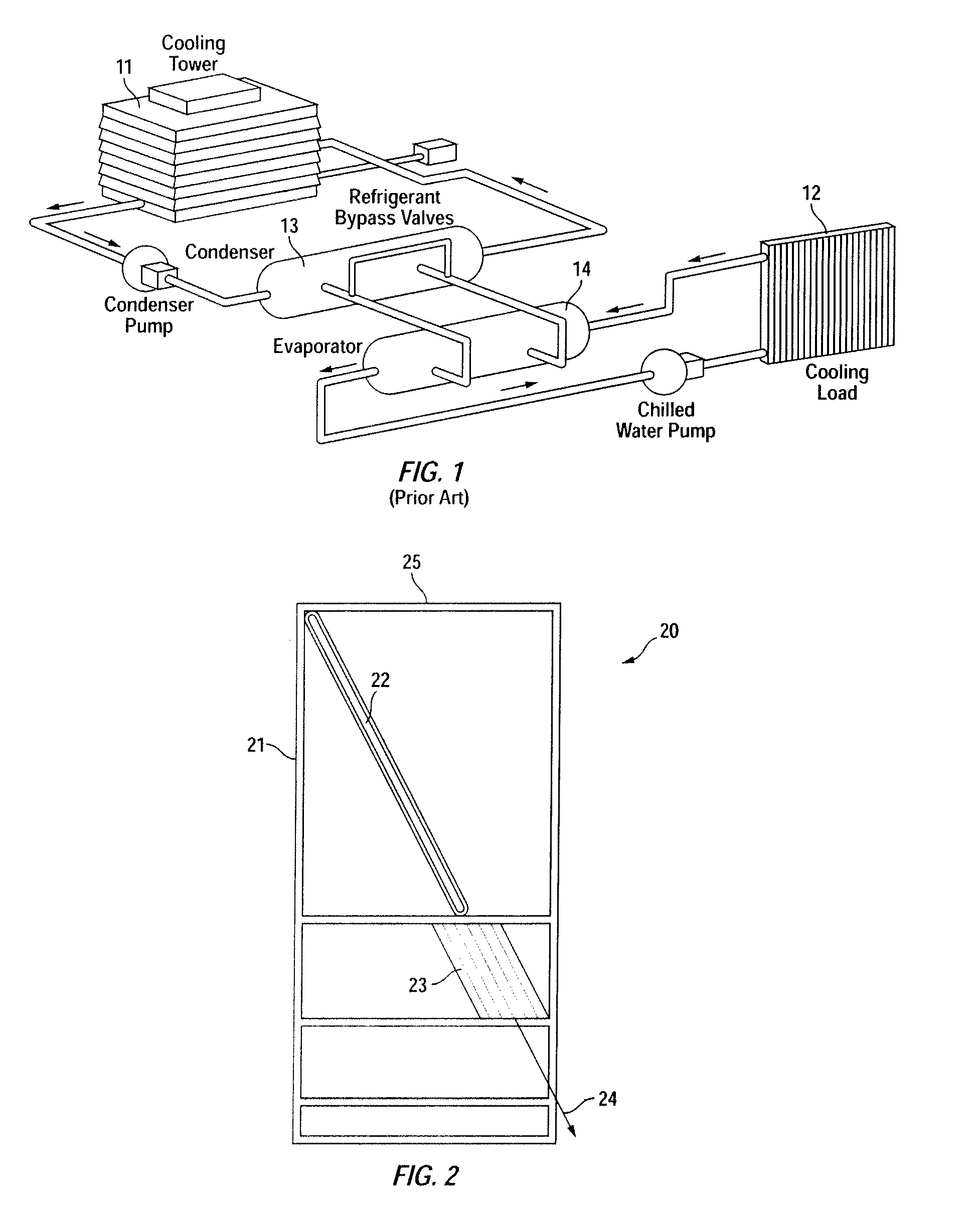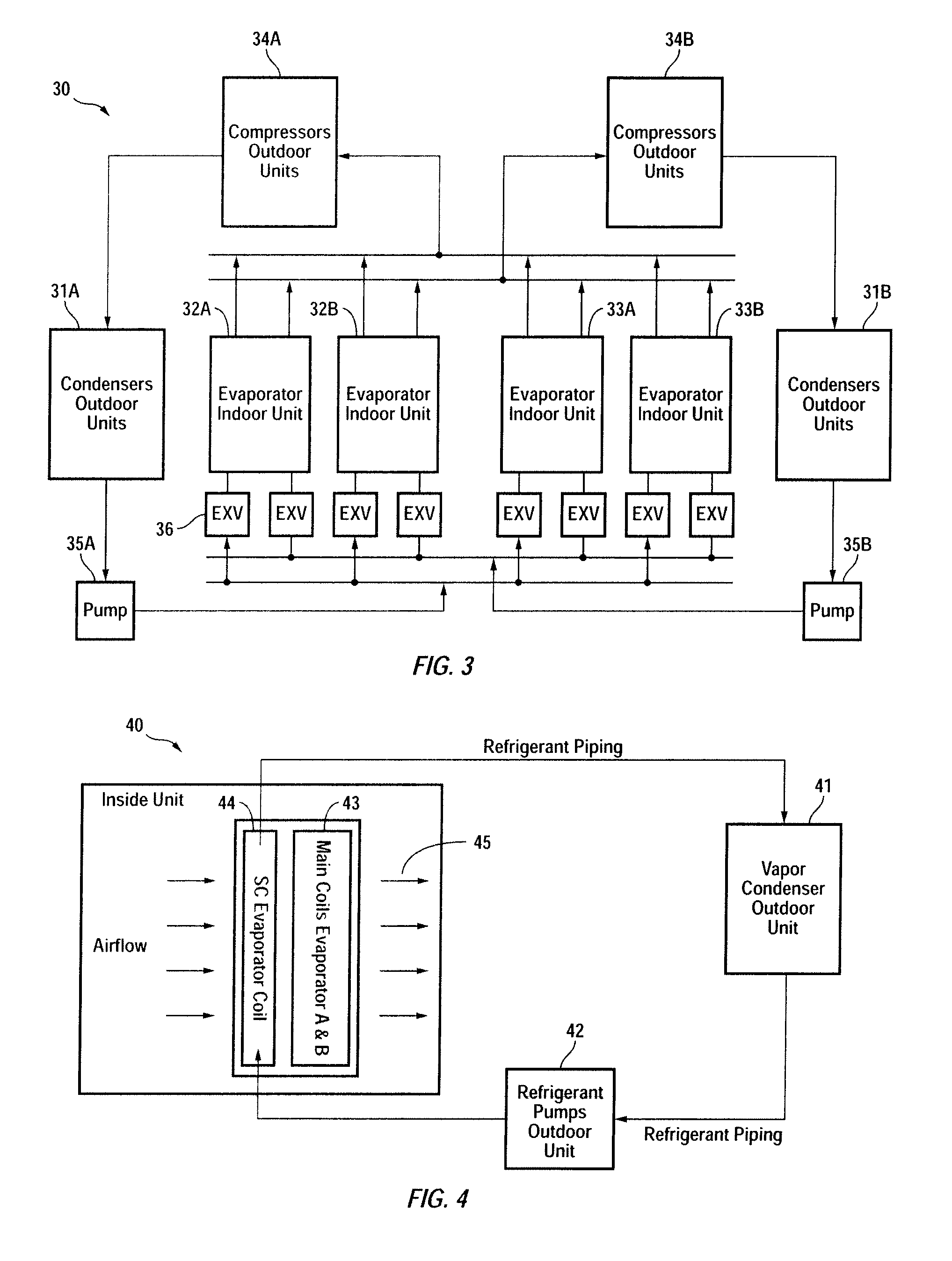Data center cooling device and method
a cooling device and data center technology, applied in the field of cooling systems, can solve the problems of system redundancy, system incompatibility with redundancy, and inefficient fan size,
- Summary
- Abstract
- Description
- Claims
- Application Information
AI Technical Summary
Benefits of technology
Problems solved by technology
Method used
Image
Examples
Embodiment Construction
[0022]Turning first to FIG. 2, housing 20 is depicted with its side walls removed for illustrative purposes. Frame members 21 support sets of evaporator coils 22 receiving coolant from compressors and related hardware located external to the data center being cooled.
[0023]In operation, ambient air within the data center is drawn through open top 25 passed sets of evaporator coils 22 through the use of prop or axial fans 23. Ideally, multiple fans are employed sufficient to maintain a positive static pressure within a space beneath the flooring. Although not shown, cool air created by housing 20 is discharged proximate racks of circuit boards and similar solid state devices through openings strategically located proximate thereto.
[0024]A feature of the present invention is the orientation of fans 23 in directing cooled air in the direction of arrows 24. CRAC units of the prior art generally employ centrifugal fans that blow air directly at the floor. This increases the static pressur...
PUM
 Login to View More
Login to View More Abstract
Description
Claims
Application Information
 Login to View More
Login to View More - R&D
- Intellectual Property
- Life Sciences
- Materials
- Tech Scout
- Unparalleled Data Quality
- Higher Quality Content
- 60% Fewer Hallucinations
Browse by: Latest US Patents, China's latest patents, Technical Efficacy Thesaurus, Application Domain, Technology Topic, Popular Technical Reports.
© 2025 PatSnap. All rights reserved.Legal|Privacy policy|Modern Slavery Act Transparency Statement|Sitemap|About US| Contact US: help@patsnap.com



